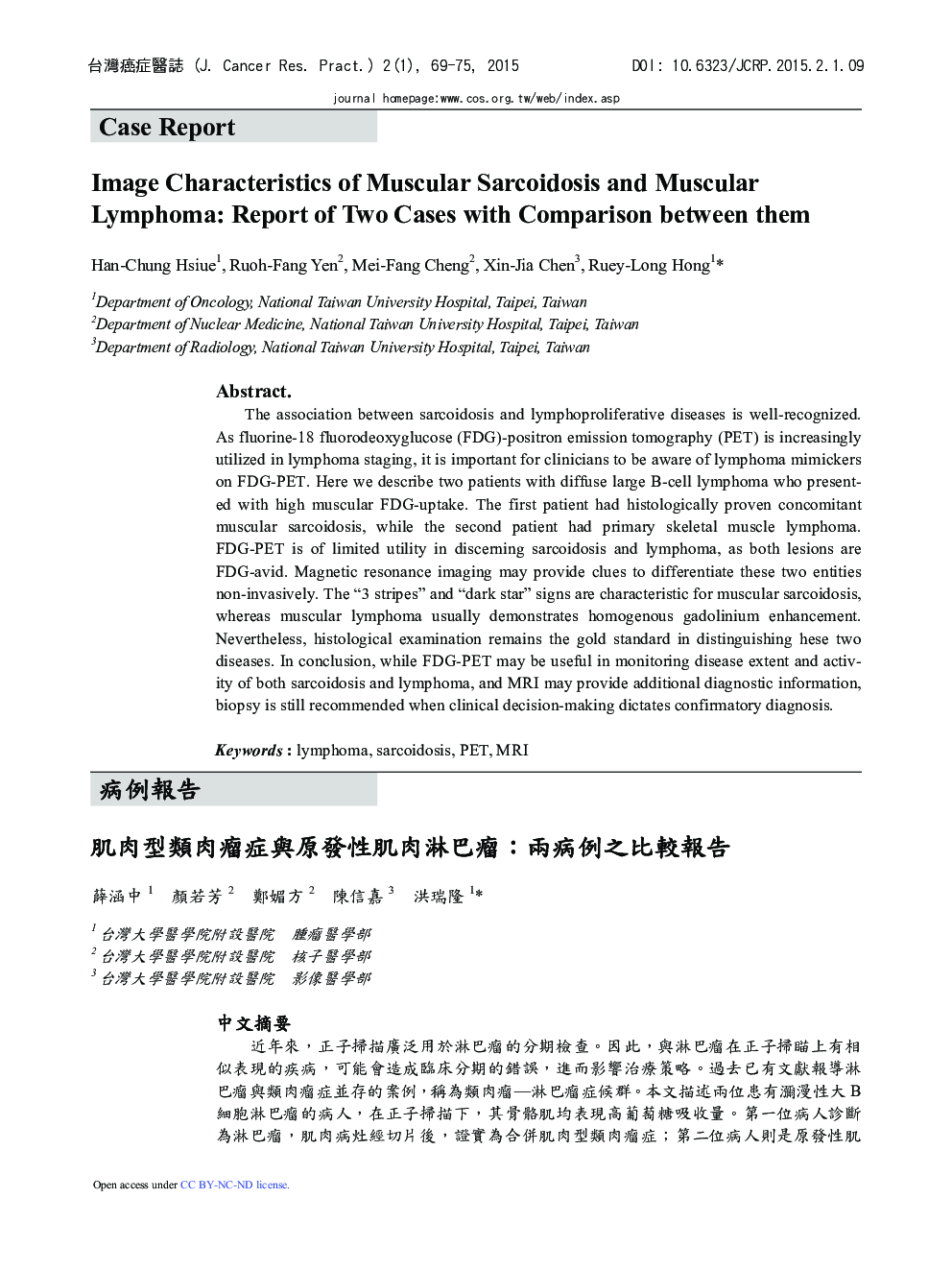| Article ID | Journal | Published Year | Pages | File Type |
|---|---|---|---|---|
| 3988802 | Journal of Cancer Research and Practice | 2015 | 7 Pages |
The association between sarcoidosis and lymphoproliferative diseases is well-recognized. As fluorine-18 fluorodeoxyglucose (FDG)-positron emission tomography (PET) is increasingly utilized in lymphoma staging, it is important for clinicians to be aware of lymphoma mimickers on FDG-PET. Here we describe two patients with diffuse large B-cell lymphoma who presented with high muscular FDG-uptake. The first patient had histologically proven concomitant muscular sarcoidosis, while the second patient had primary skeletal muscle lymphoma. FDG-PET is of limited utility in discerning sarcoidosis and lymphoma, as both lesions are FDG-avid. Magnetic resonance imaging may provide clues to differentiate these two entities non-invasively. The “3 stripes” and “dark star” signs are characteristic for muscular sarcoidosis, whereas muscular lymphoma usually demonstrates homogenous gadolinium enhancement. Nevertheless, histological examination remains the gold standard in distinguishing hese two diseases. In conclusion, while FDG-PET may be useful in monitoring disease extent and activity of both sarcoidosis and lymphoma, and MRI may provide additional diagnostic information, biopsy is still recommended when clinical decision-making dictates confirmatory diagnosis.
